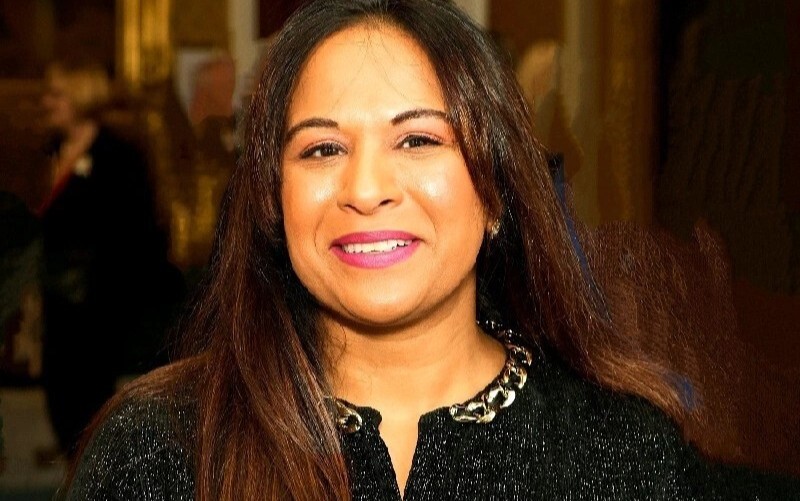Benefits for all: Why SMEs deserve better
Dipa Mistry Kandola on levelling the benefits playing field for SMEs

To Dipa Mistry Kandola, the UK employee benefits landscape represents both opportunity and inequality.
With over 20 years in financial services and employee benefits, Mistry Kandola has witnessed seismic shifts in how companies support their staff, from rigid final-salary pensions to today’s flexible, technology-driven models. Now at the helm of Parallel Employee Benefits, she is on a mission to make meaningful benefits accessible to the country’s 5 million SMEs who account for 60% of UK employment and represent over 99% of the business population.
Mistry Kandola’s career began in 2003, at a time when the UK pension landscape was undergoing profound change. “It was a pivotal time,” she recalls. “There was a move away from finance-led ‘tick-box’ pensions towards a people-focused approach led by HR,” she explains. “Flexibility and choice became the theme and recognising that not everyone’s the same.”
Her experience in the brokerage and advisory space taught her that while large employers could access innovative, tech-driven benefits, SMEs were largely left behind. “I realised that SMEs needed a solution that combined good advice, good communication, and good technology.”
The SME Challenge
So, why are smaller businesses priced out of meaningful benefits? Mistry Kandola points to entrenched market structures. “Twenty years ago, there were about ten tech-first providers in the market. Today, that has consolidated into four dominant players. They have complex, expensive systems designed for large employers, with a hefty price tag. SMEs just don’t need, or can’t afford, that level of complexity.
The result is a contradiction: while SMEs represent the majority of the workforce, they are underserved. The problem is compounded, she says, by HR decision-makers carrying their preferences in providers from one employer to the next. “The market favours legacy systems, entrenched thinking, and high costs,” she says. “It’s a shame, because there are 5 million SMEs in the UK being underserved today.”
Mistry Kandola has tried to challenge this inequity head-on. Before joining Parallel Benefits, she led a startup focused specifically on technology for SMEs. “We set ourselves the challenge of delivering a simple, affordable solution that was truly accessible to smaller employers. We intentionally hired developers outside the industry who could focus on the problem statement without the legacy baggage.”
That venture grew quickly, reaching 200 employers on the platform in four years, but became a casualty of market forces. “We needed further funding just as venture capital money dried up in 2023. One of the big four players in the employee benefits technology space acquired us. It shows the problem: monopolies stifle innovation. This sector needs to create more space for SaaS startups to succeed independently.”
She adds, “Until we allow newcomers to grow, nothing will change”.
The Road to Inclusive Benefits
For Mistry Kandola true inclusion in benefits goes beyond equality of access. “It’s about relevance. What does your workforce need? Are you considering demographics, family situations, financial pressures, wellbeing, or learning opportunities? Benefits should be a living, breathing ecosystem that moves with the business and its people.”
She points to core protections such as life assurance and health cover, lifestyle benefits for families or wellbeing, and the growing focus on financial support. “There’s a debt crisis hitting high, mid and low earners alike. That has to be part of the conversation too.”
This strategic thinking, Mistry Kandola shares, is also essential for retention and engagement. She is acutely aware of the generational divide reshaping the workplace. “The average tenure today is around 18 months,” she observes. “Younger employees, especially Gen Z, are not afraid to move if they don’t feel supported. They want more than salary; they want flexibility, wellbeing, and personal development.”
For many, work-life balance has overtaken financial reward as the key measure of satisfaction. At the same time, hybrid working has complicated how knowledge is passed down to newcomers to the workforce. “When you don’t have everyone in the office, informal mentoring and learning can get lost. Employers need to rethink how they create connections between generations. Benefits and development programmes can play a role in bridging that gap.”
Revisioning the Future
As the employee benefits landscape evolves, Mistry Kandola remains optimistic. “Technology, advice, and inclusivity can finally converge to serve SMEs properly. It’s about giving employees choice, supporting HR, and delivering value that aligns with a business’s culture and goals. That’s the future of benefits and it needs to be for all.”
COVID-19 accelerated digital adoption but also exposed gaps in planning and engagement, she says. “During lockdown, everything was urgent: health, wellbeing, counselling. Employers had to throw everything at employees at once. Now, it’s time to step back and think about the why and the how before rushing to the how much.”
For SMEs in particular, simplicity is key. “You don’t need to mirror what a FTSE 100 company is offering. Start small, keep it relevant and affordable, and build over time. Benefits should evolve with your workforce. Review them regularly, drop what isn’t working, and be open to change. Above all, make sure every employee feels they are part of the conversation.”
Mistry Kandola concludes with a warning against market complacency. “Monopolies stifle innovation.” She stresses, “Start-ups need space to flourish so SMEs can finally access the solutions they deserve.”
 Amy Assad
Amy Assad